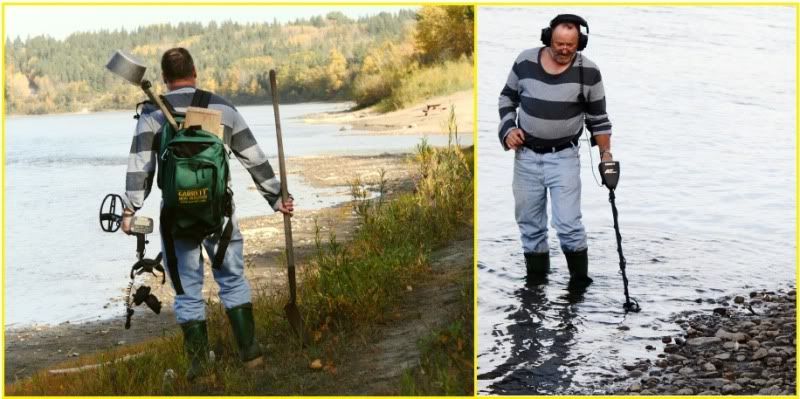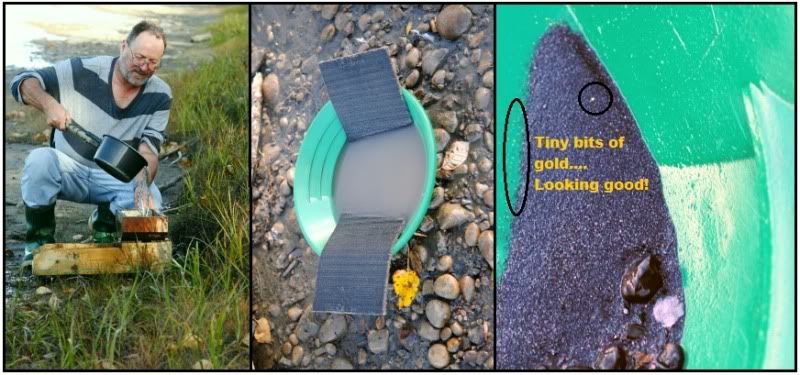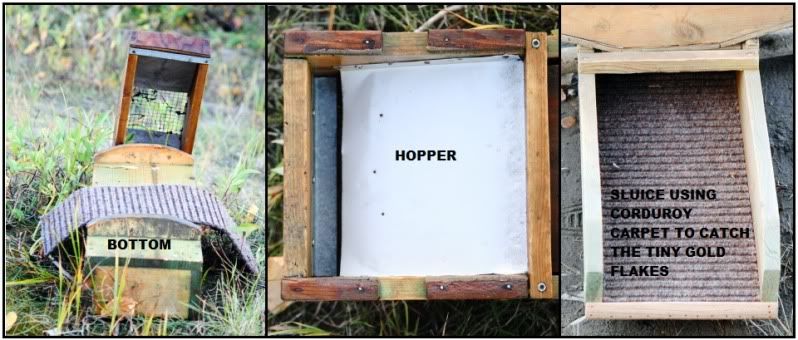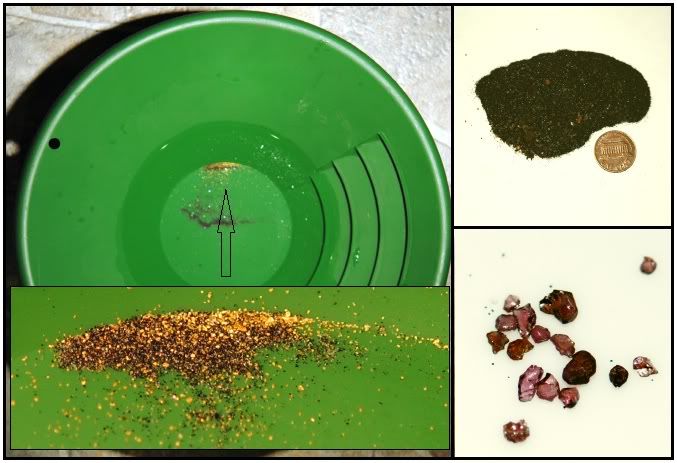
Hunting for gold ain't easy. No driving right up to the beach or park. You usually have to pack up your gear and do some hiking into gold country. The Garrett back pack is a nice large size, designed to carry lots of equipment. Once you get to a spot that may have some potential, you turn on the AT pro, adjust the numbers on the ground balance high to get it to run unstable, turn up the threshold, turn on the iron audio and run it in true all metal mode. What you are going to do is walk around and listen for the iron in the gravel. The more the iron, the better chance of finding some of that tiny flour gold. I walked around the area and chose what was the highest iron content, on a nice gravel bar.

Here's my equipment that I used today, my mini rocker.. Panning for gold takes a long time, and can be hard on the back. I built this mini-rocker many years ago. I refer using it as "POWER PANNING, as I can fill the hopper with about a shovel full of gravel, then run water through it, rocking it back and forth. Once set up at the right angle and a constant flow of water while rocking it, the tiny gold particles settle in the carpet fibers, while the lighter stuff gets washed out of the sluice. If you run it with too steep of an angle, or too much water flow, you end up washing out the gold. So....once set up properly, I can do a pan full of gravel in about 2 minutes. A much shorter time then panning for gold using a pan.

After about ten good shovel fulls of gravel have gone through the rocker, I clean the black sands out of the carpet, then restart the same process of filling the hopper with gravel and washing it through the rocker with water. After my first cleanup, I checked my black sands to see if there was in fact any gold. And there sure was. The AT Gold wasn't lying when it told me that there was a lot of black sands in this area.

Here are some pics of the mini-rocker. It was designed so that the hopper with the screen on it, would slide into the sluice part to make it compact and easy to carry. It fits nicely into the Garrett backpack, plus two gold pans for easy carrying. Notice the curved bottom pieces on the bottom to allow the rocker to rock back and forth with ease.....just like a rocking chair.

After a couple of hours of running gravel through my mini-rocker, I headed home to do my final panning. I filled up a tum of water, sat at the kitchen table and panned a couple of teaspoons of my black sands at a time to separate the gold from the other material. I ran a magnet through each batch to collect all the iron, making it easier and faster to pan. Shown in the above pic is the iron left over from the black sands which I saved and brought home. There are lots of garnets in the river I worked. I saved some just to show what they look like in the raw.
After I separated most of the flour gold, I put it into a tiny vial from work, which had prior been filled with a flu vaccine from a couple of years ago. I added a string, some beads and it turned out to be a necklace.
The AT Gold is one heck of a machine! Water proof, good on gold and also a decent coin hunter. And a very sensitive machine too.



